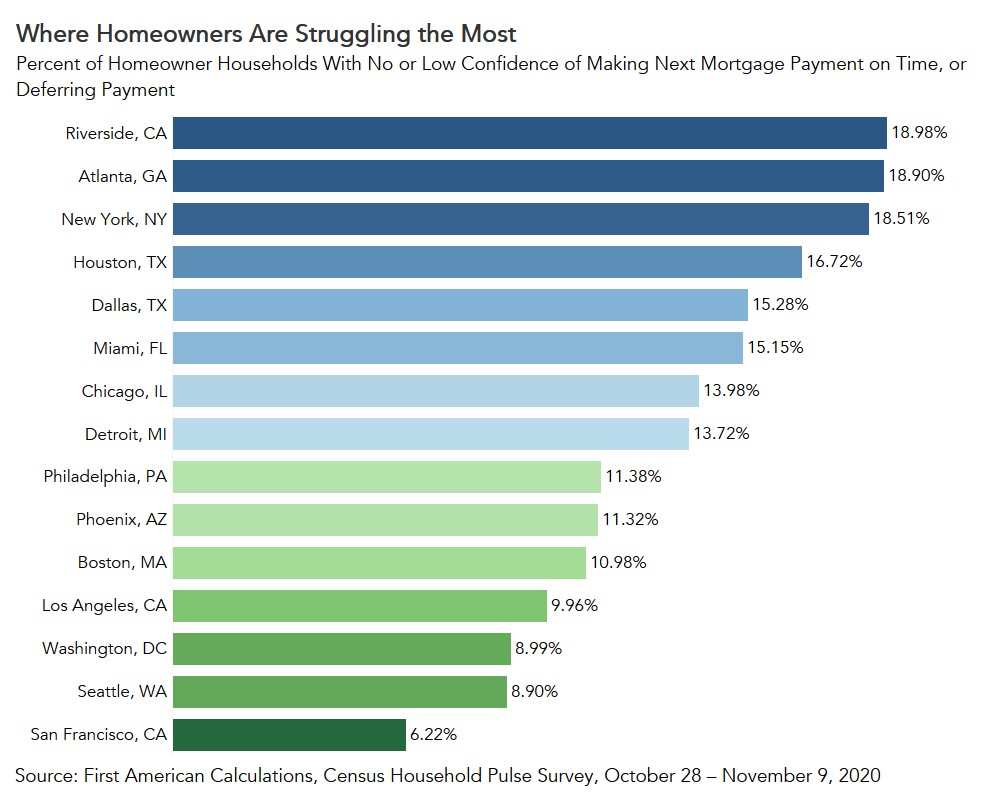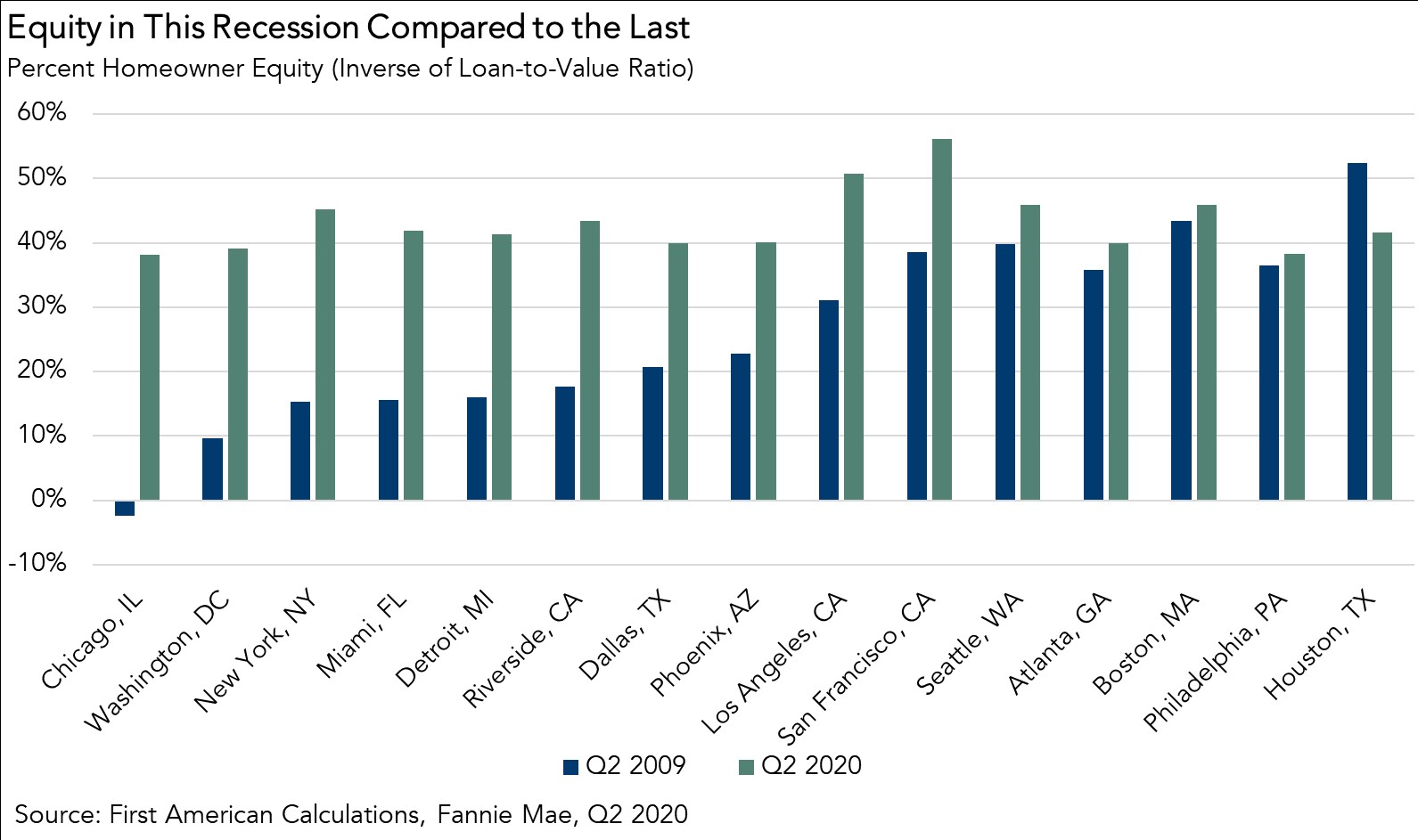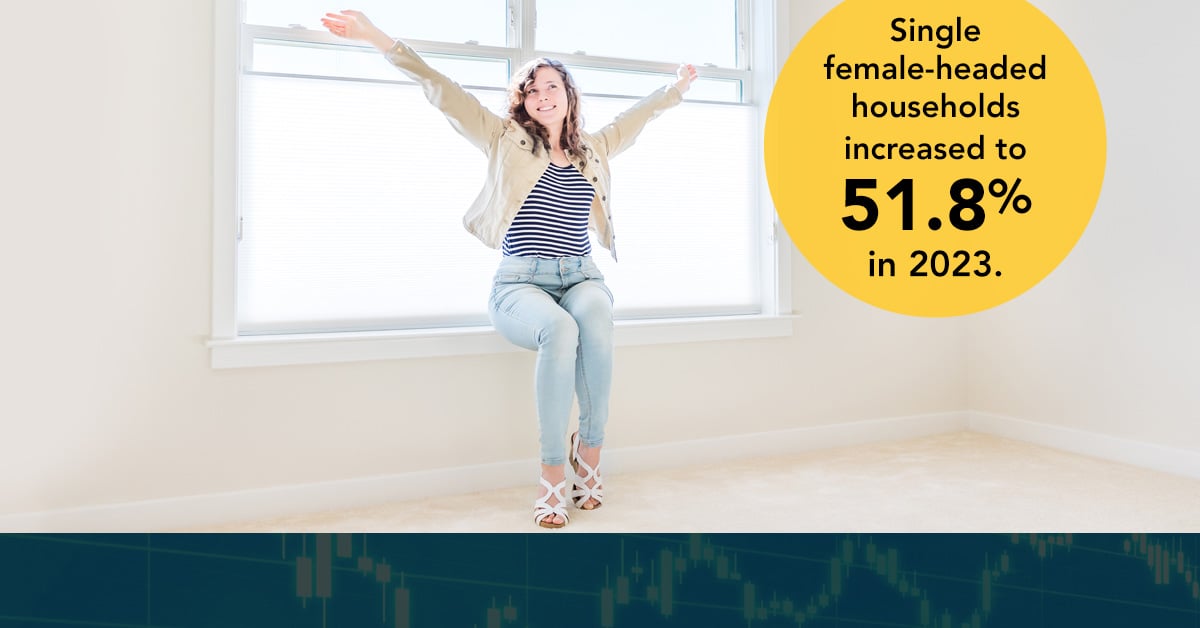In spite of the record-setting spike in unemployment at the outset of the pandemic, foreclosure activity in 2020 has plunged to an all-time low. The fiscal stimulus and foreclosure moratorium clearly made a difference, helping thousands of homeowners keep their homes. At the peak in early June, 8.6 percent of all mortgage loans were in forbearance. Since then, forbearance levels have fallen as the economy has improved, but 5.5 percent of mortgage loans are still in forbearance, so risk to the housing market remains.
"Of the 15 markets reported in the Census Pulse Survey, homeowner equity is greater today in 14 out of 15 markets compared with the second quarter of 2009, which was the trough of the Great Recession."
In fact, many homeowners are indicating that they are uncertain about their ability to make their mortgage payments, according to data from the Census Pulse Survey (see figure below). The share of homeowners uncertain in their ability to make their mortgage payment has declined since peaking in the summer but, as with forbearance levels, remains high. Many are concerned that we may see a foreclosure tsunami in the months ahead, but there are good reasons this may not happen.

Understanding the Dual Trigger of Foreclosure
The foreclosure process is based on two steps. First, the homeowner suffers an adverse economic shock, such as a loss of income, leading to the homeowner becoming delinquent on their mortgage. However, delinquency by itself, even serious delinquency, is not enough to send a mortgage into foreclosure. With enough equity, a homeowner has the option of selling their home, or tapping into their equity through a refinance, to help weather the economic shock. It is a lack of sufficient equity, the second component of the dual trigger, that causes a serious delinquency to become a foreclosure.
Local Markets are Better Positioned This Time
Nationally, homeowner equity has increased to a three-decade high, which signals the housing market is in a better position to weather foreclosure risk than it was prior to the Great Recession. However, examining equity gains at the market level can provide even greater insight into foreclosure risk. Of the 15 markets reported in the Census Pulse Survey, homeowner equity is greater today in 14 out of 15 markets compared with the second quarter of 2009, which was the trough of the Great Recession.
To highlight the important role that equity plays in preventing foreclosure, we built a simple model using the dual trigger of equity and homeowner unemployment, a proxy for delinquency. For example, in Detroit, after accounting for equity and the unemployment rate among homeowners, the number of predicted foreclosure starts in the second quarter of 2020 would have been 60 percent lower when compared with the height of the Great Recession. Why?
The homeowner unemployment rate in Detroit was 19 percent in the second quarter of 2020, which is even greater than the peak homeowner unemployment rate in Detroit during the last crisis. However, the average homeowner equity in Detroit during the second quarter of 2020 was 41.3 percent, compared with 16 percent in the second quarter of 2009. While homeowner distress, measured through the homeowner unemployment rate, is much higher across all 15 Census Pulse survey markets now, the likelihood of foreclosures is lower because equity levels are higher today, particularly in some of the markets hit hardest in the Great Recession.

Today’s housing market is fundamentally different from the one preceding the Great Recession. The housing market’s fundamentals – historically low rates, strong demographically driven demand and limited supply – are strong and anticipated to remain as such into 2021. In addition to existing homeowner equity, house price appreciation driven by an undersupply of housing inventory relative to demand continues to push equity levels up across the country. If distressed homeowners are required to resolve delinquency, given their equity buffers, involuntary sales are much more likely than foreclosures. The distress that many homeowners face in this recession is real but, because of the equity buffer, we are likely to avoid the foreclosure tsunami many are predicting.
Ksenia Potapov contributed to this blog post.

.jpg)

